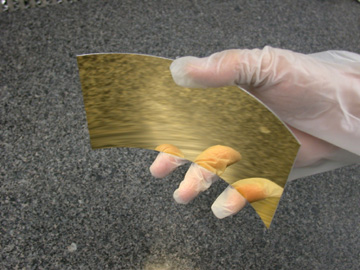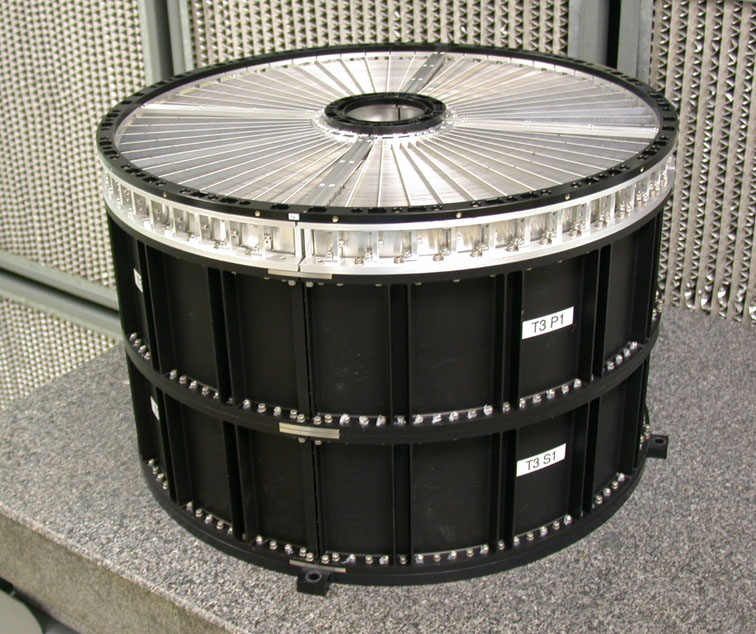Suzaku Special Exhibit
The X-ray Telescope

One of the Suzaku reflectors. (Credit: NASA)
X-rays can't be focused using conventional mirrors or lenses. Depending on their energy, X-rays either pass right through or are absorbed by such materials. However, X-rays can be focused if they strike a metal surface at a shallow angle. Suzaku uses two such "grazing incidence" reflections to focus X-rays.
X-rays were reflected off pieces of thin aluminum that are coated with gold. Each of these reflectors was shaped like a section of a cone. This meant that each reflector was roughly rectangular in shape but was curved along its length. The reflectors were 10 cm wide and ranged in length from about 9 cm to about 29 cm. Incoming X-rays struck the mirror along its width. The reflectors were assembled to form a completed mirror. The reflectors were arranged in the mirror concentrically, about 170 deep. Each mirror consisted of about 1350 reflectors, is about 40 cm in diameter and had a mass of about 19 kg.
Suzaku carried 5 X-ray mirror assemblies, one for the XRS, and four for the X-ray Imaging Spectrometers.

A Suzaku XRT telescope. (Credit: NASA)
Published: July 2005
Text Reviewed: September 2018


